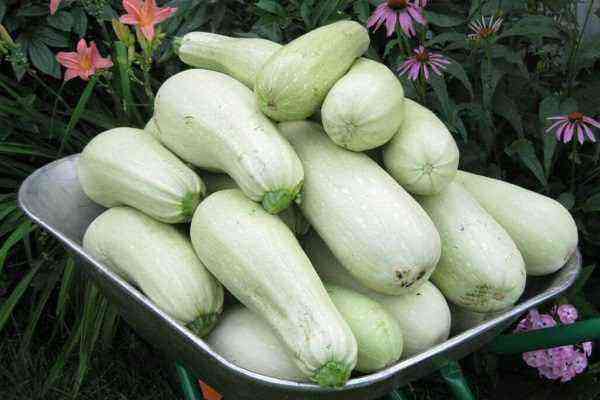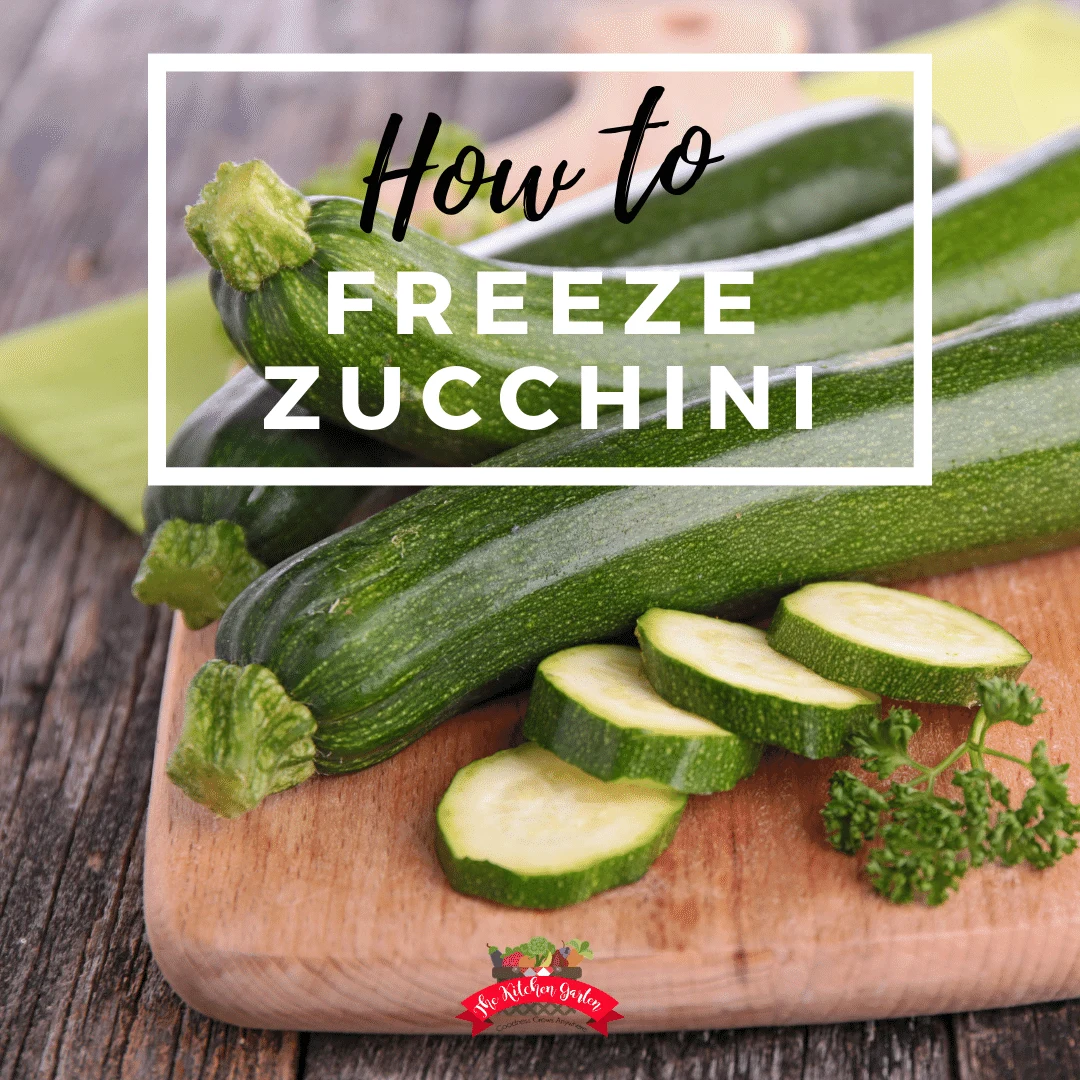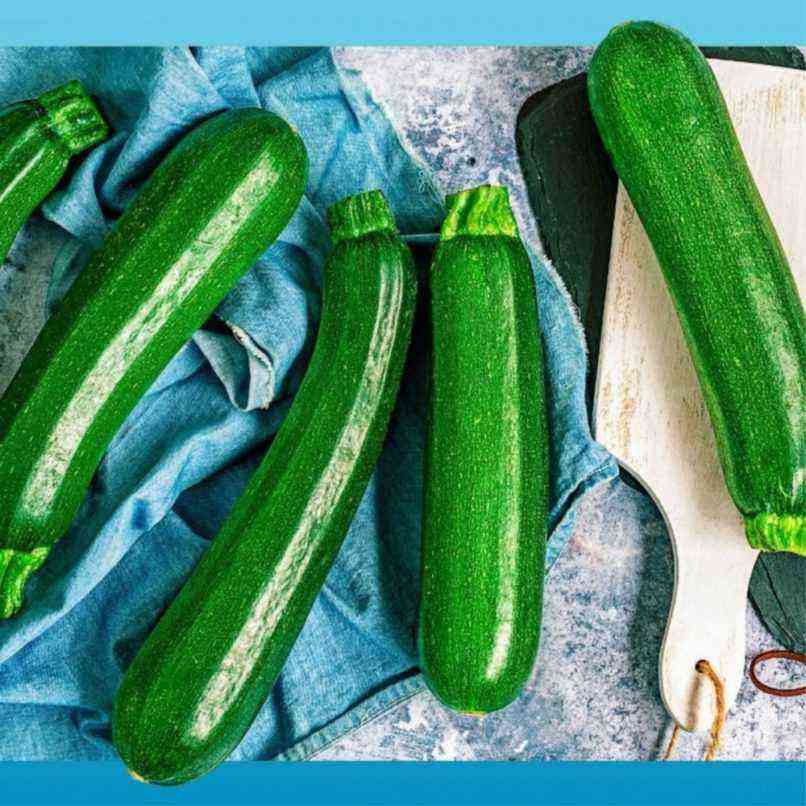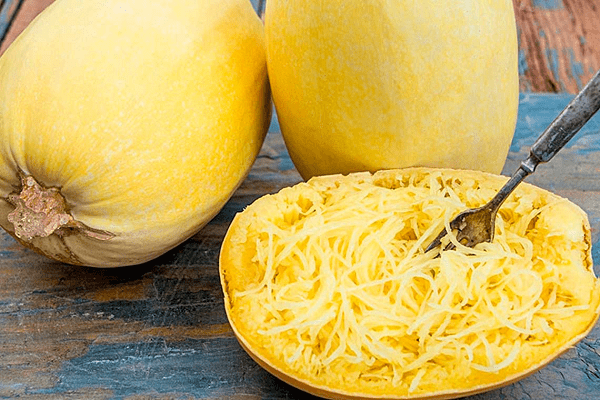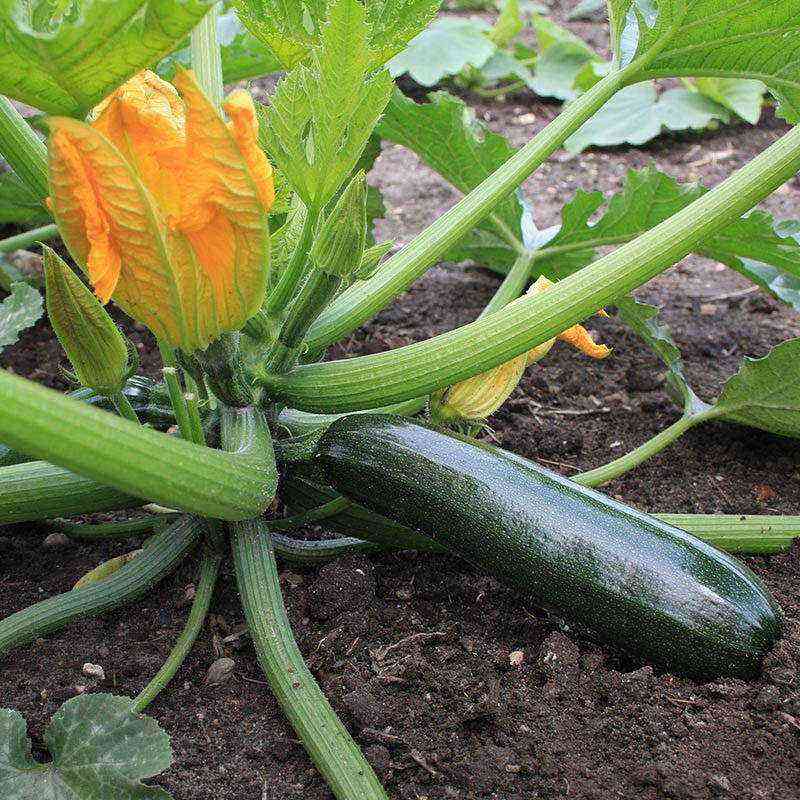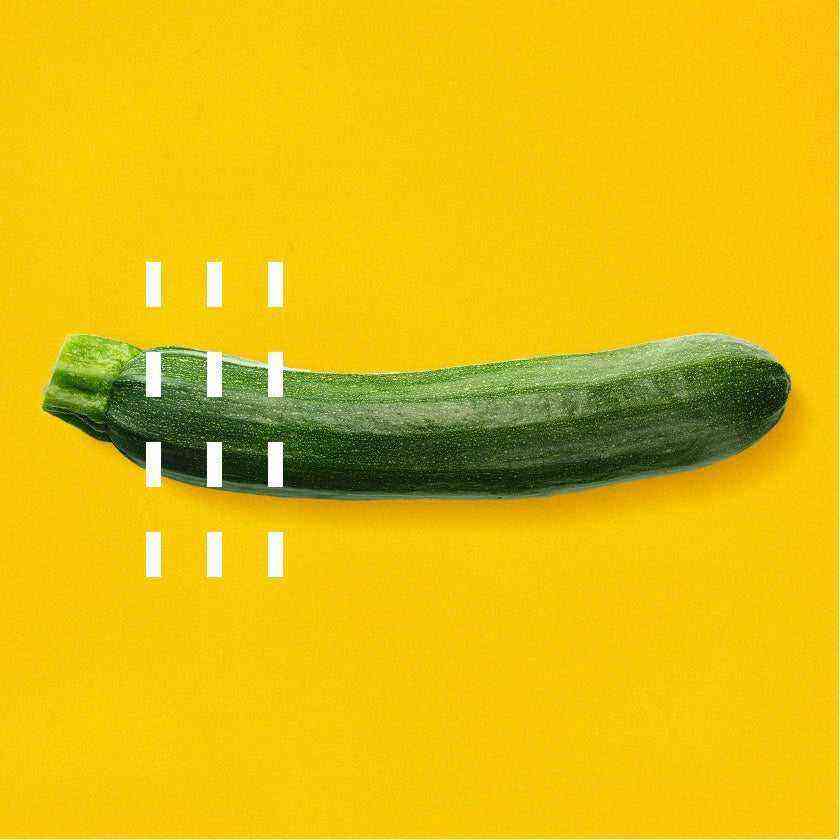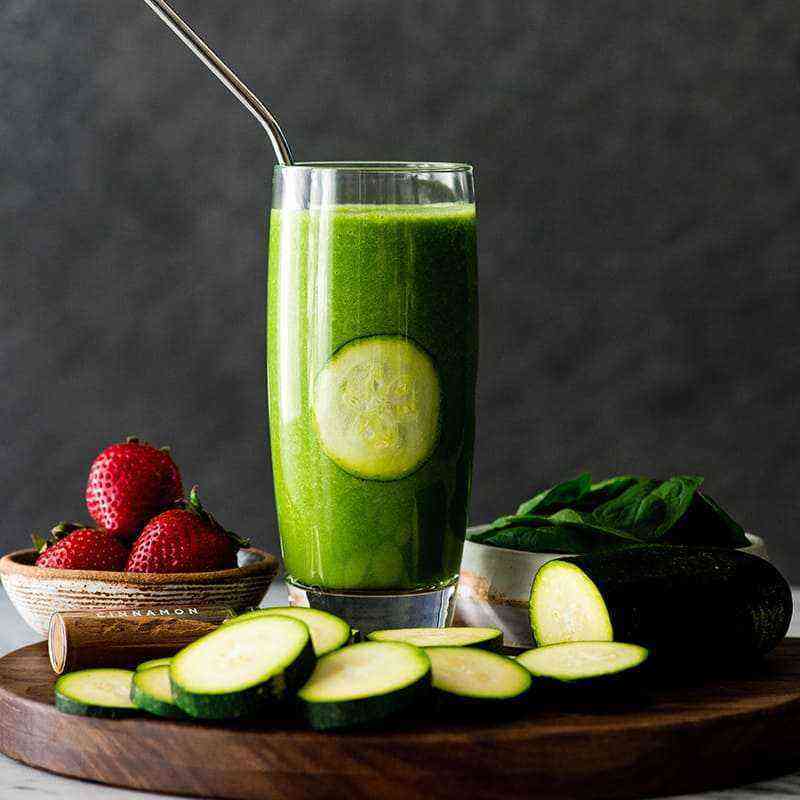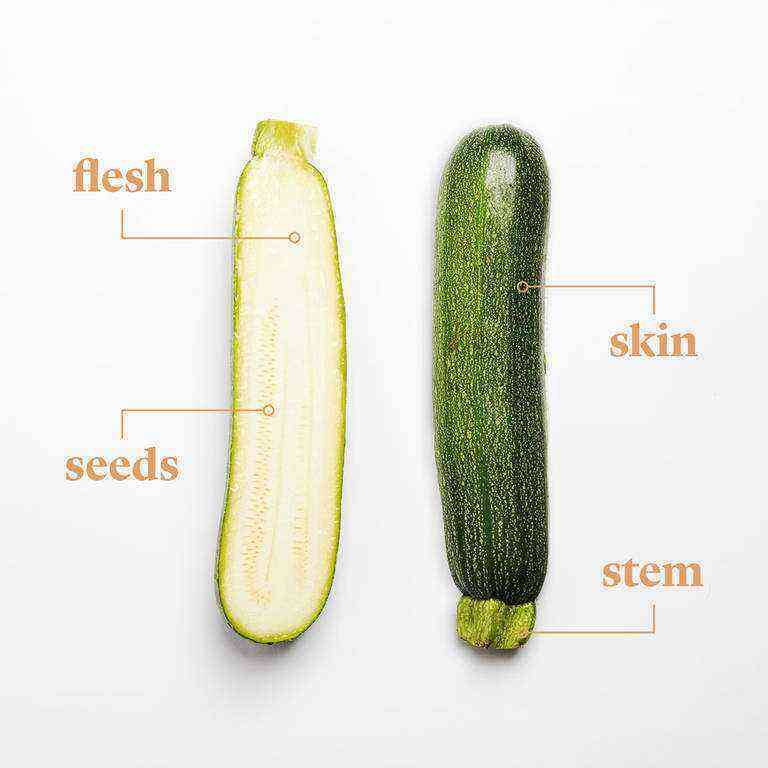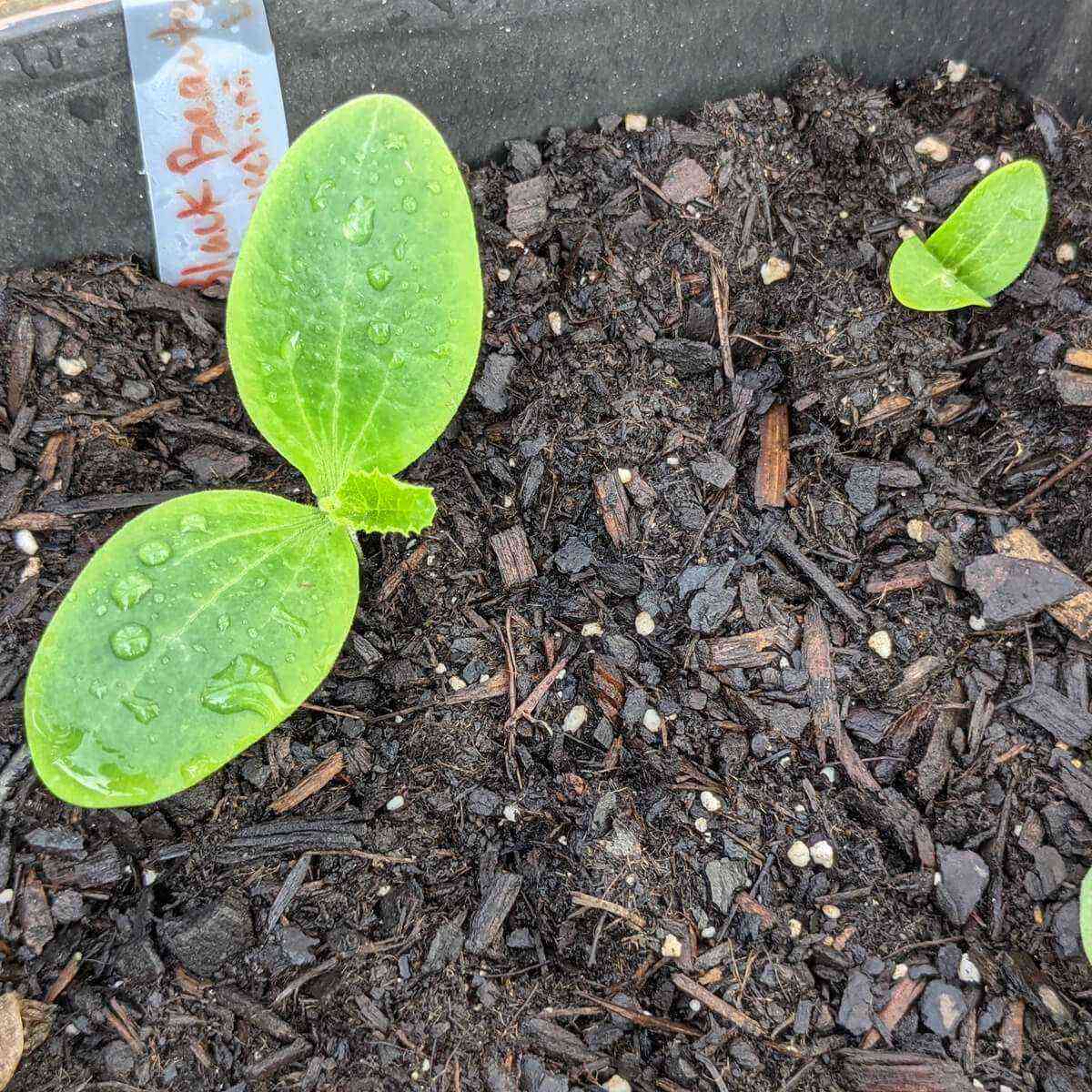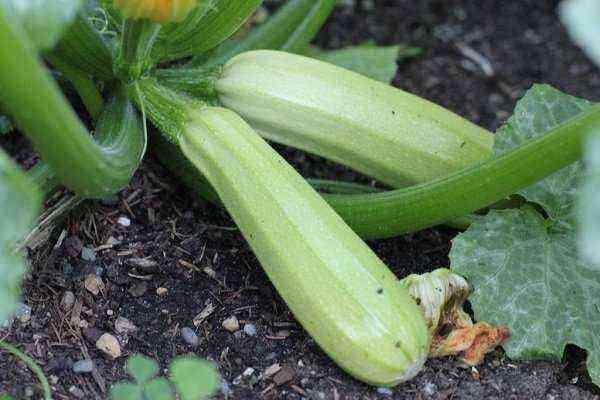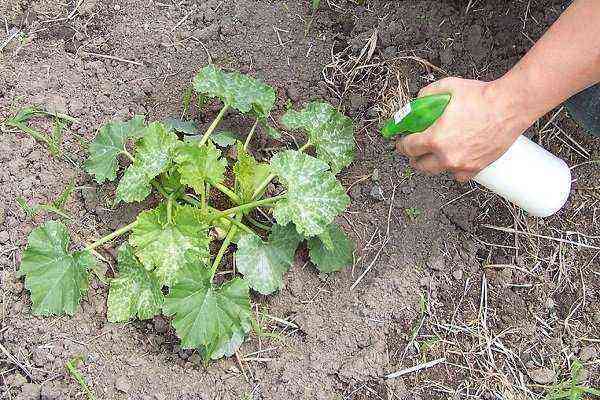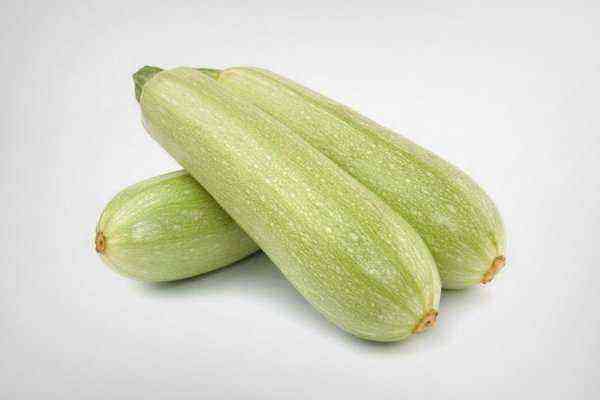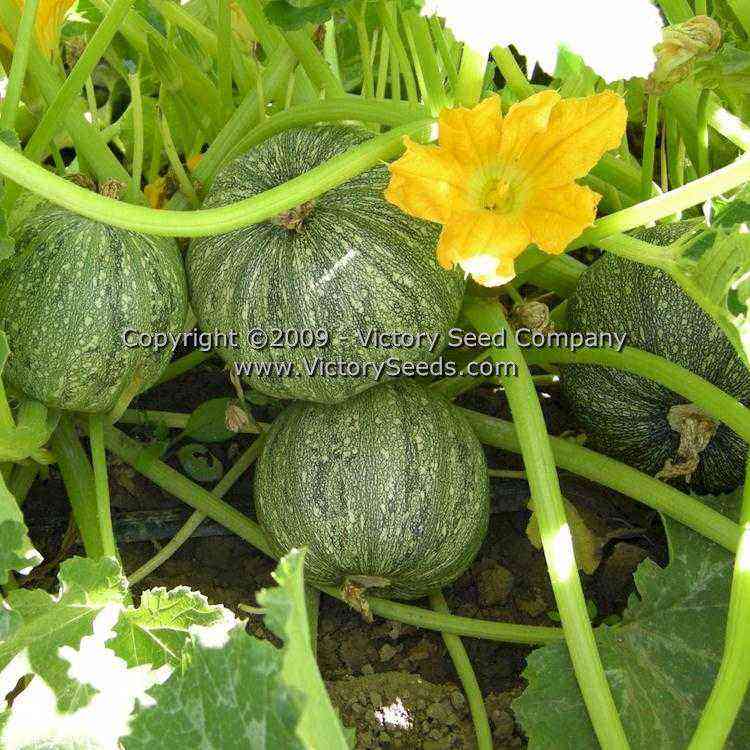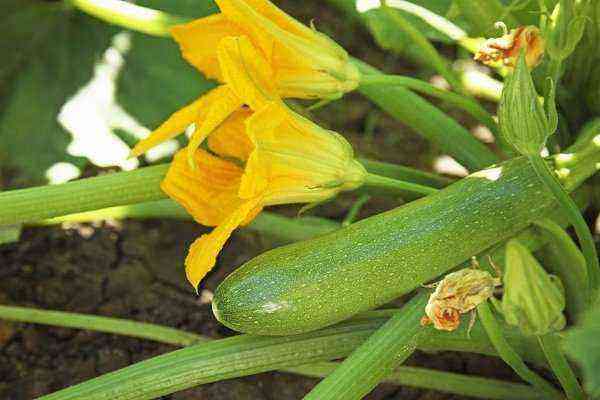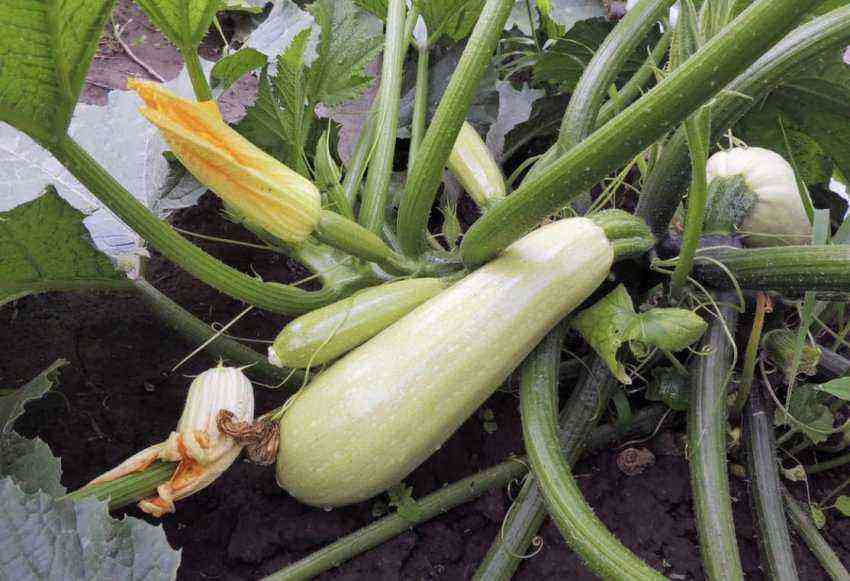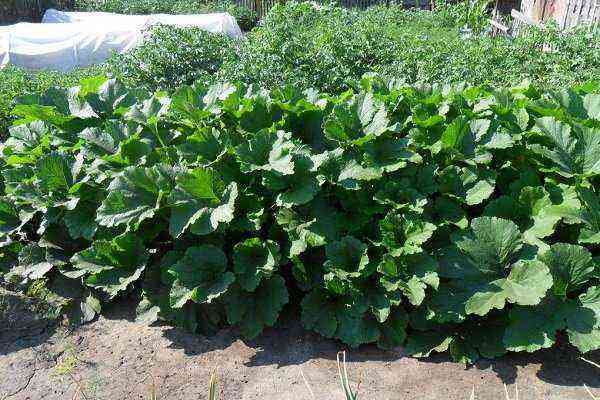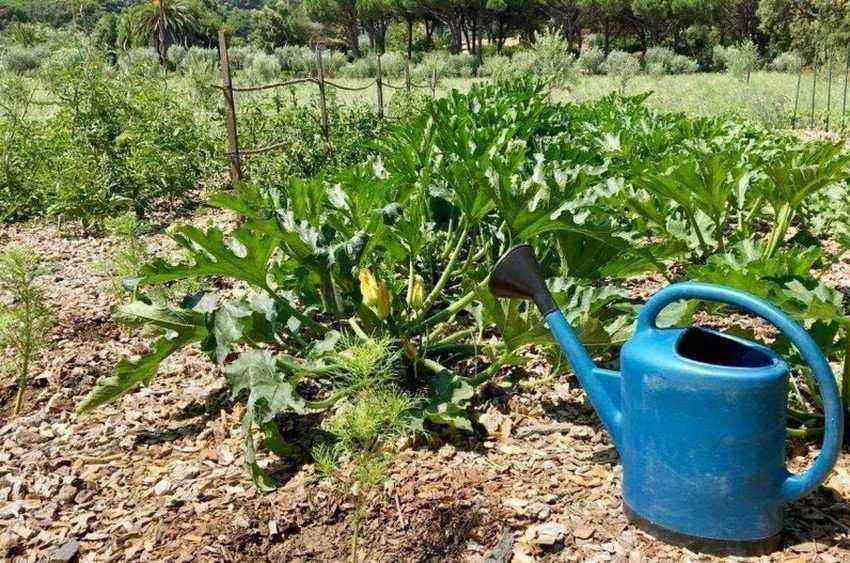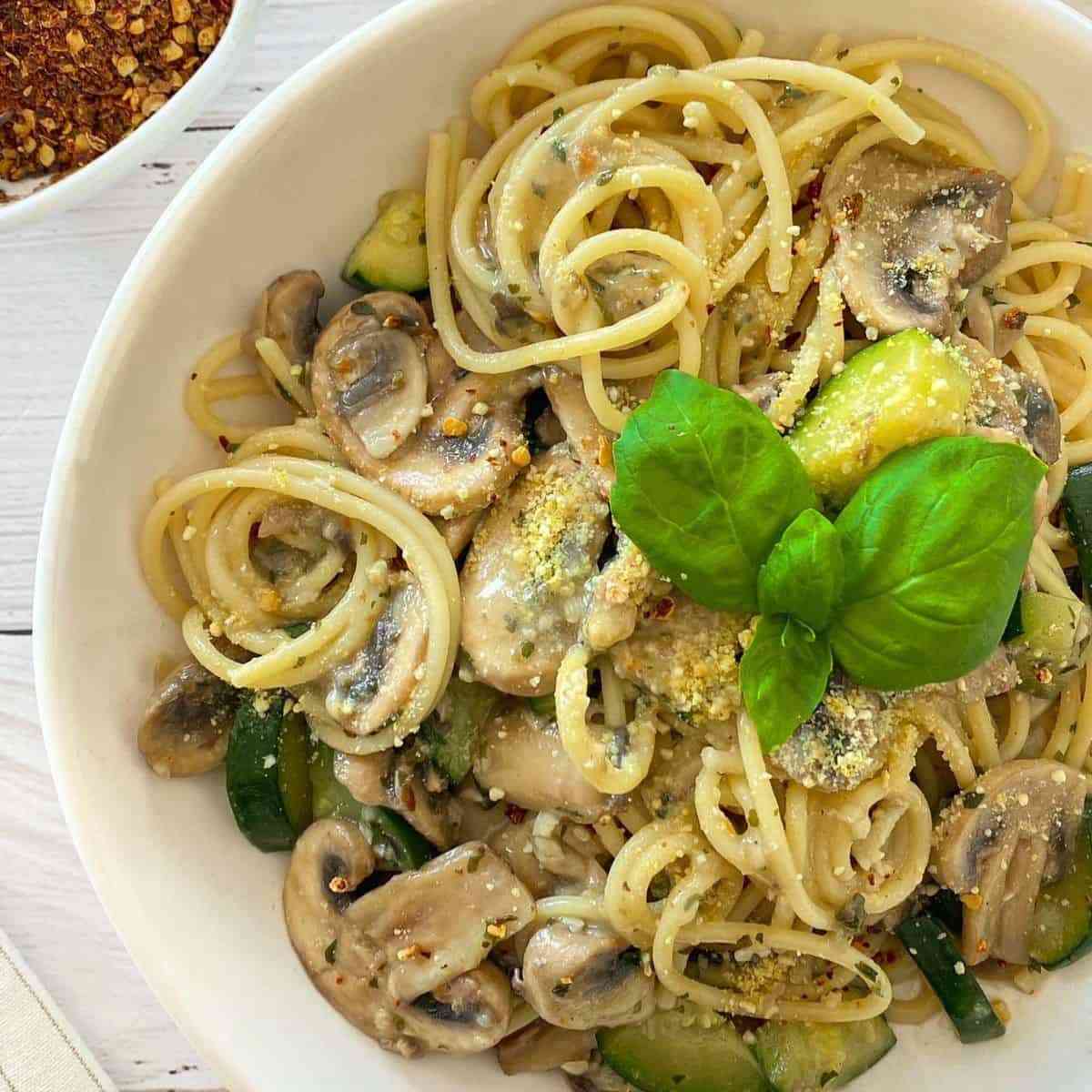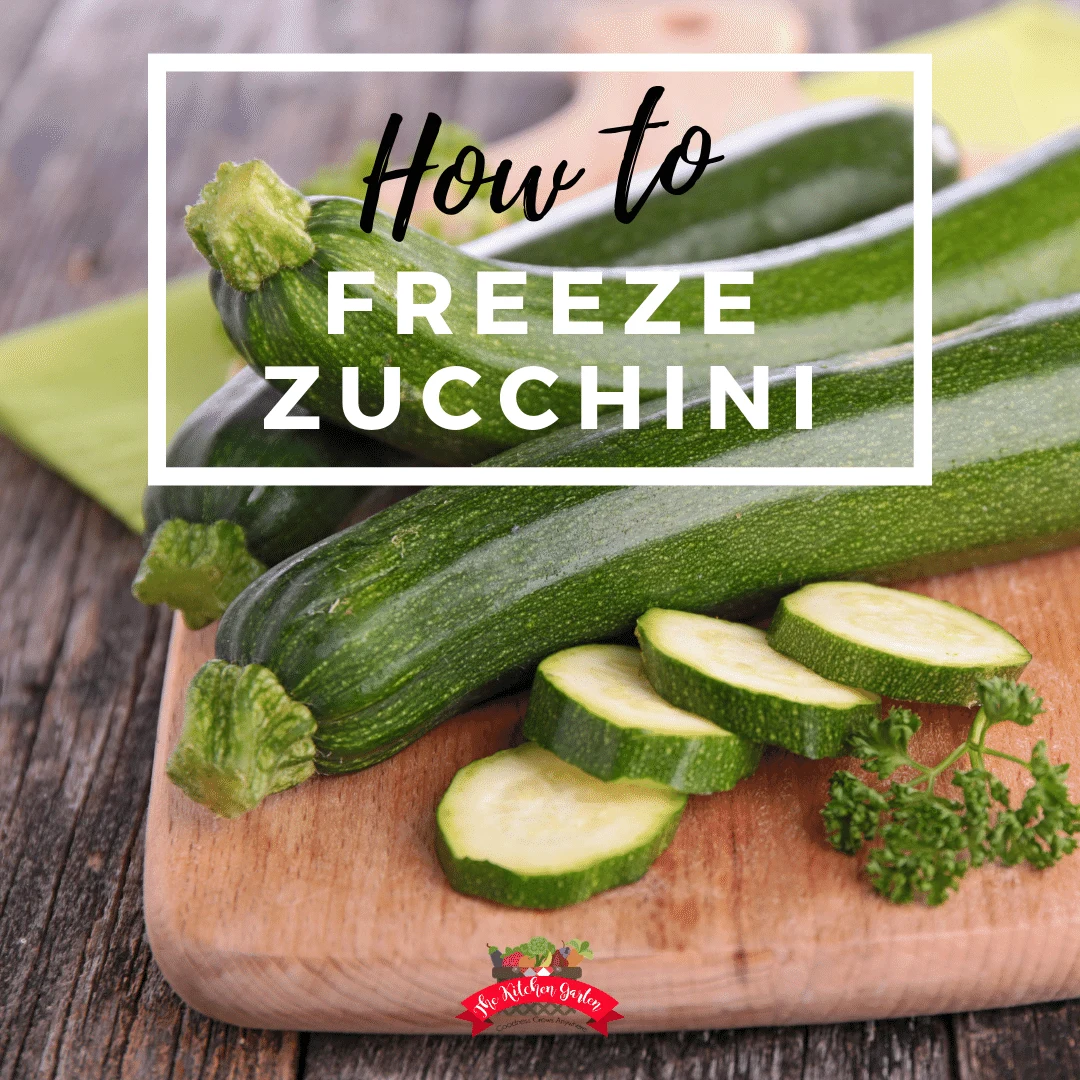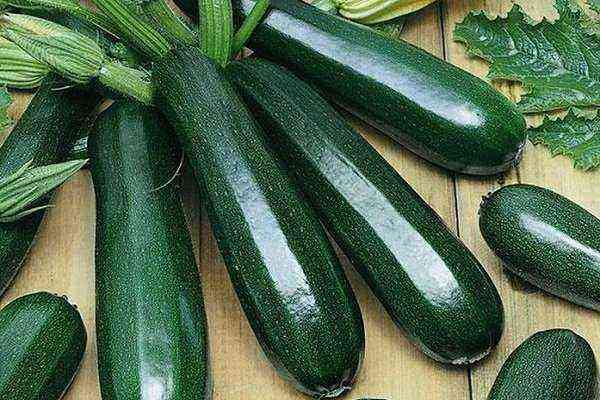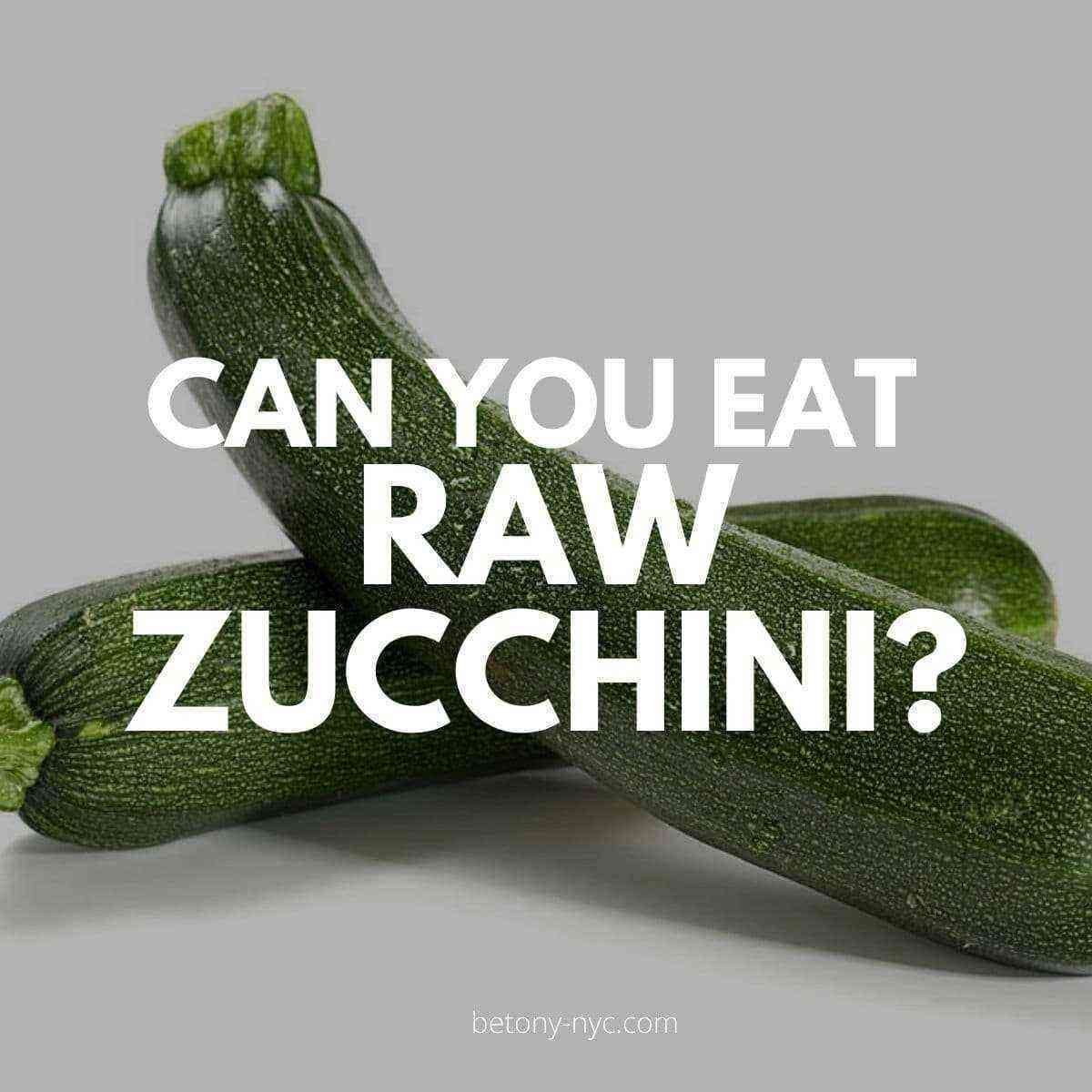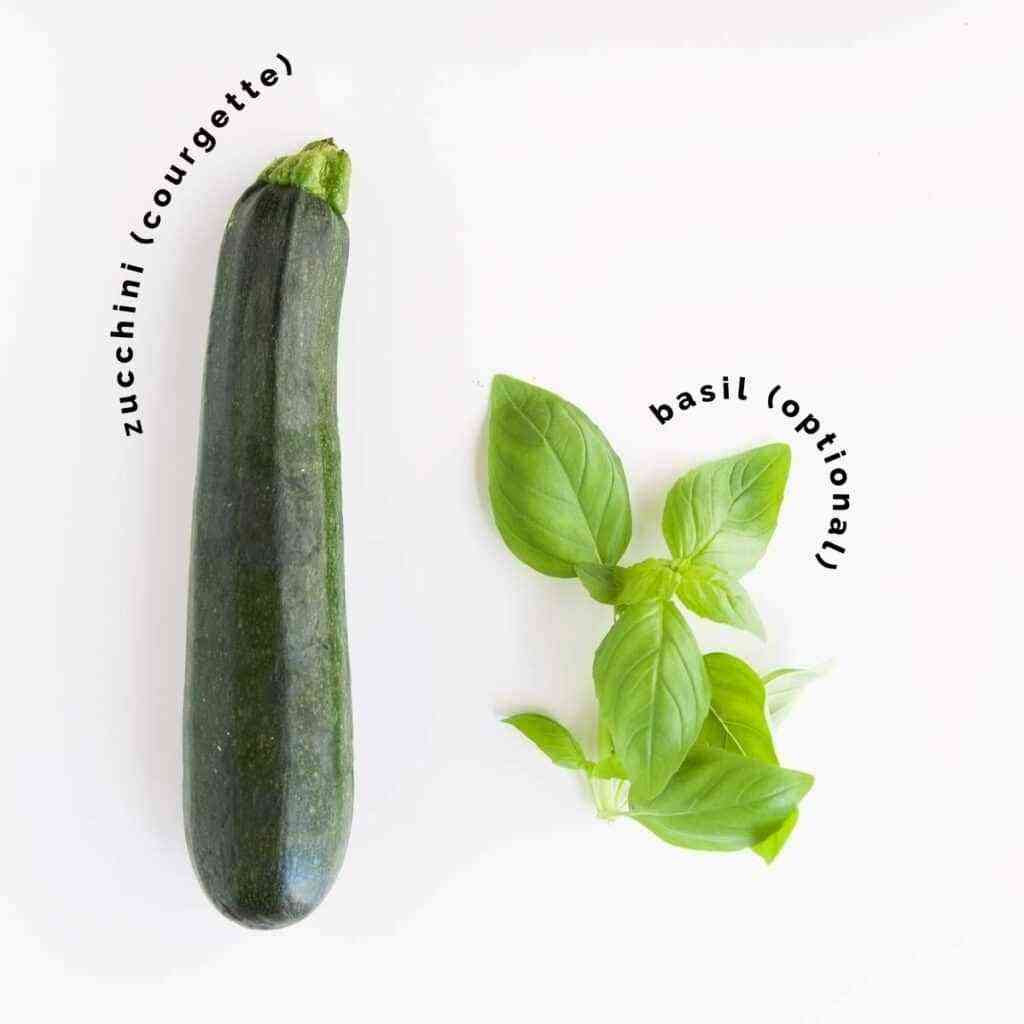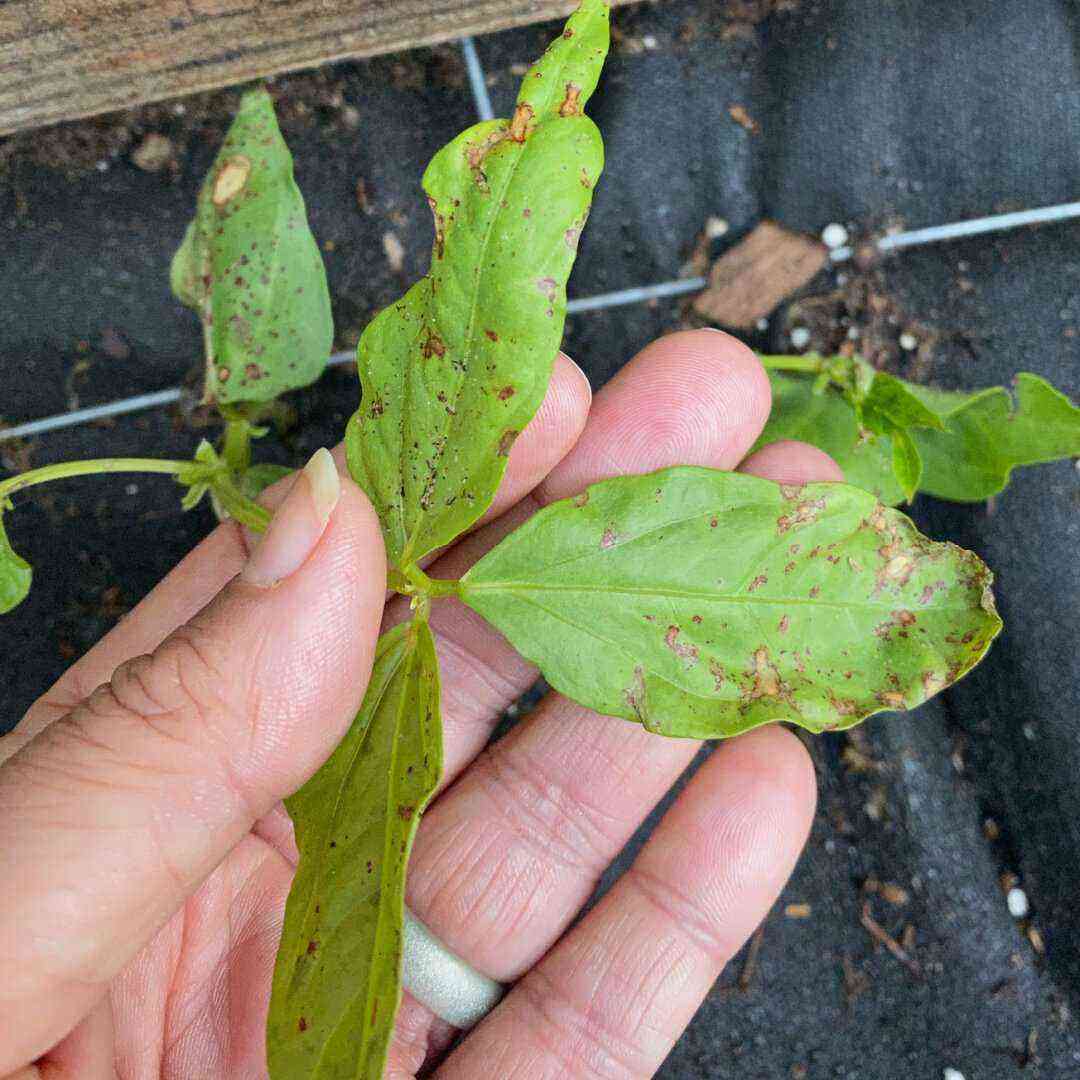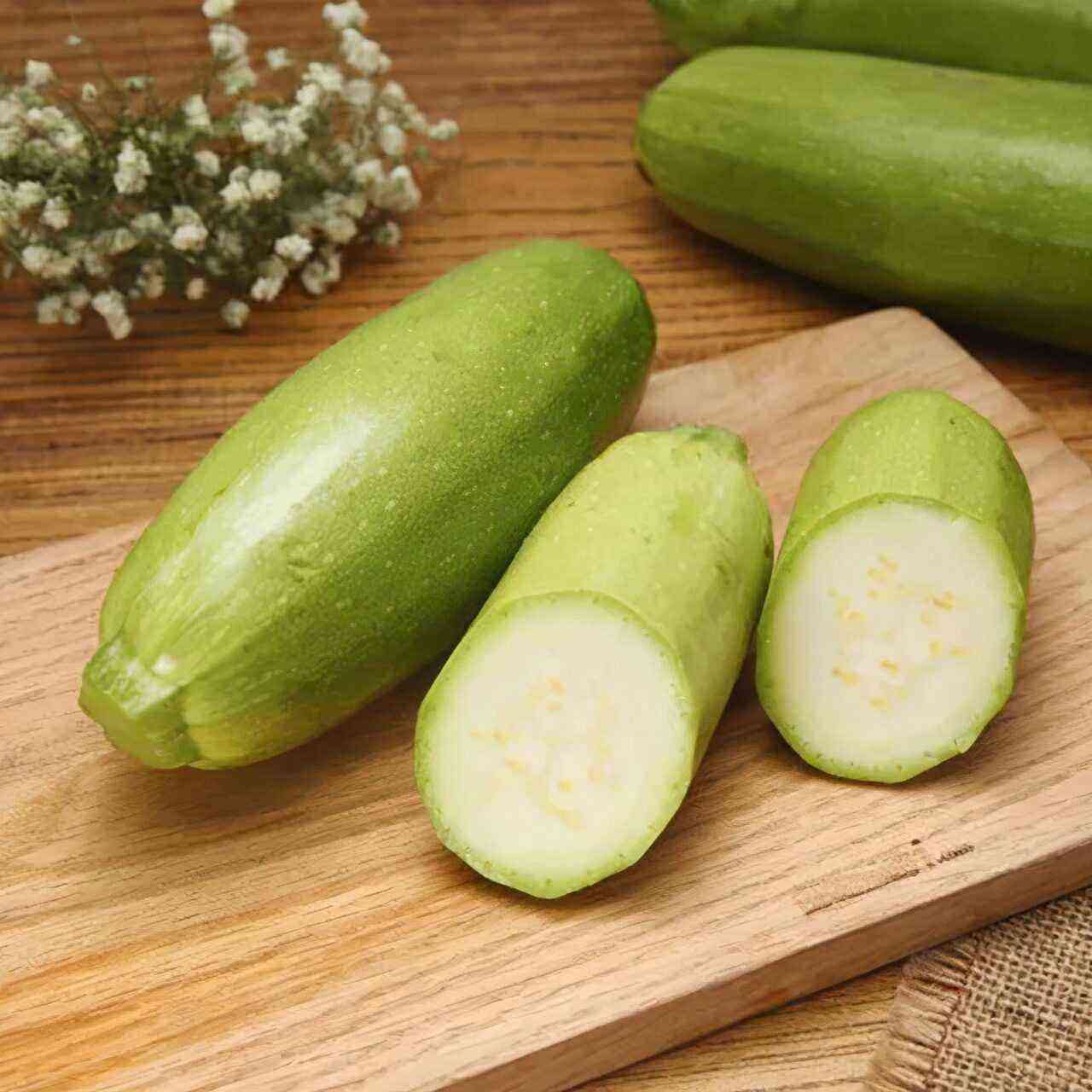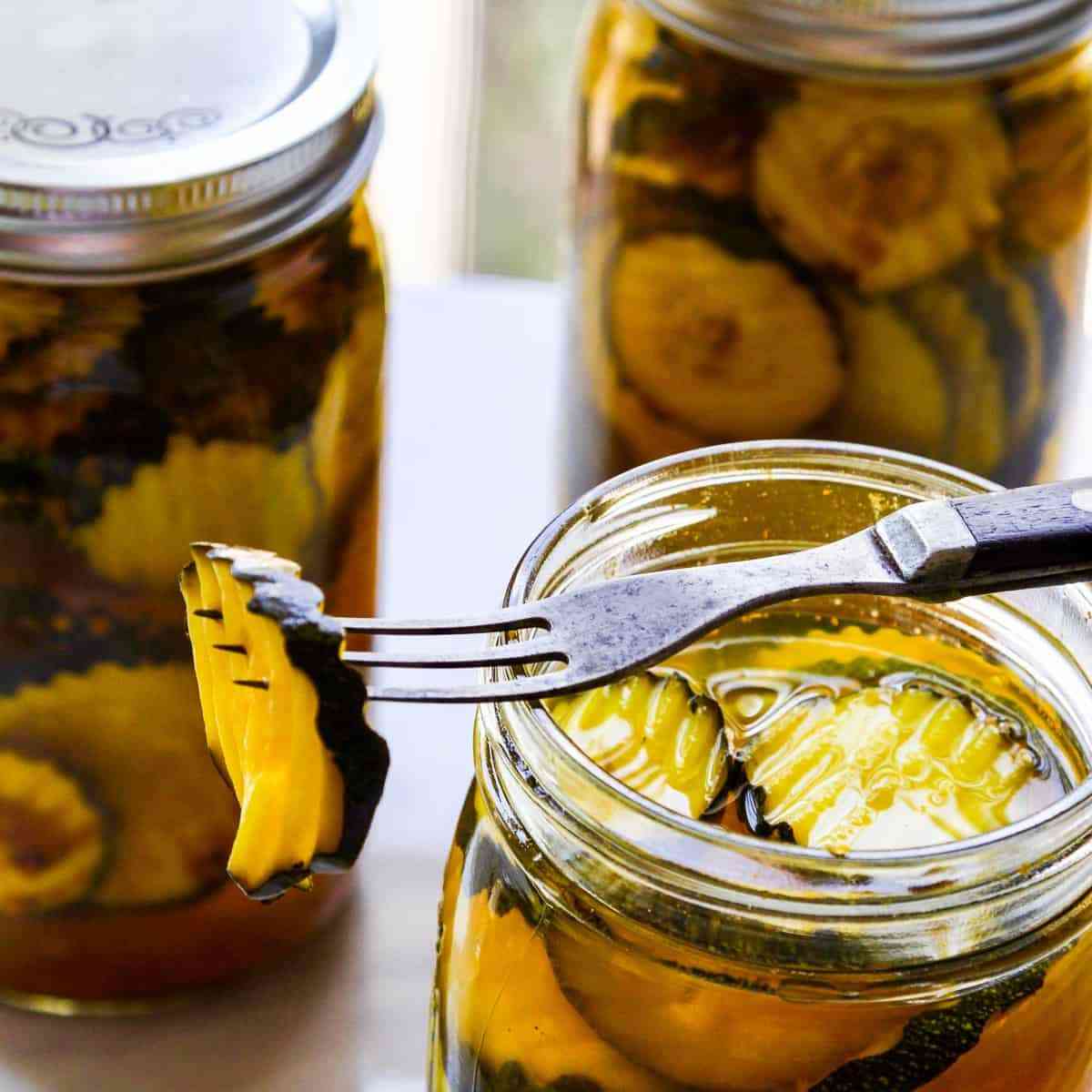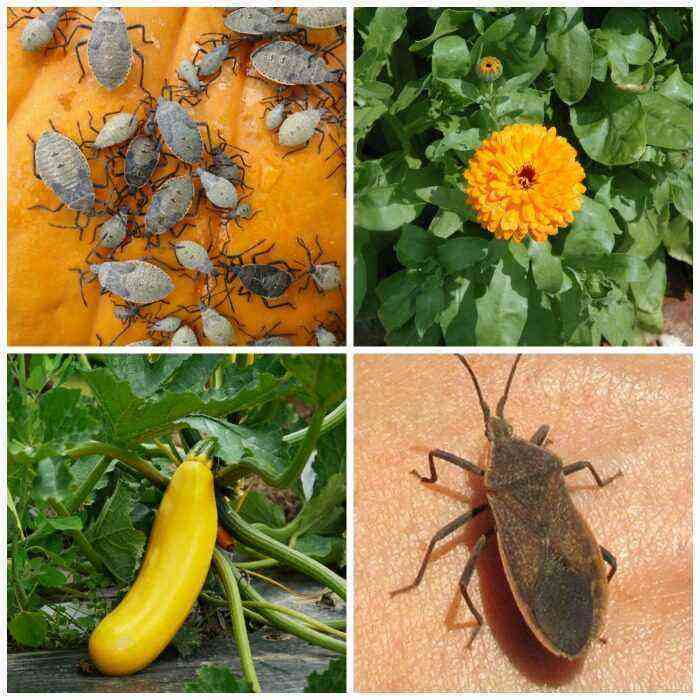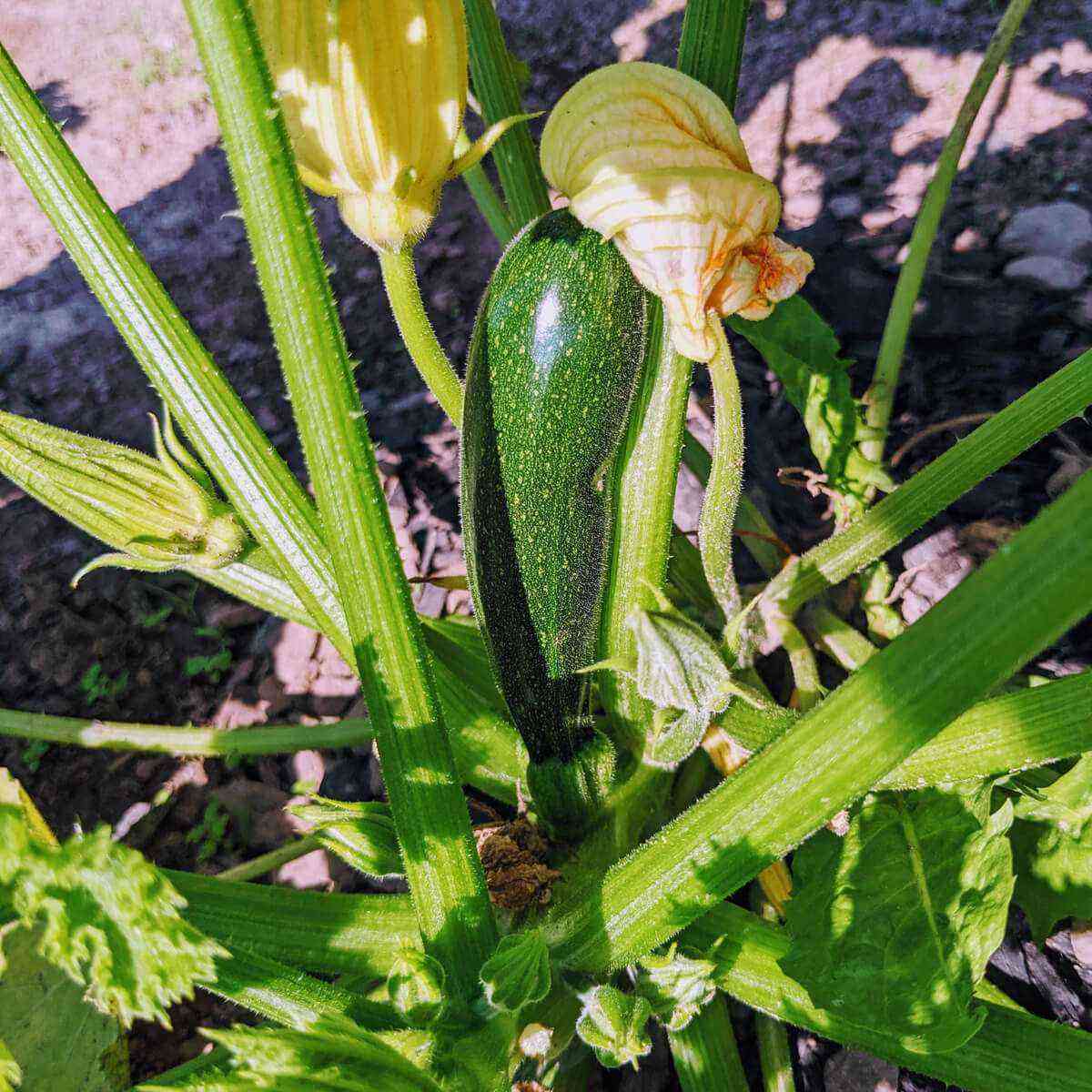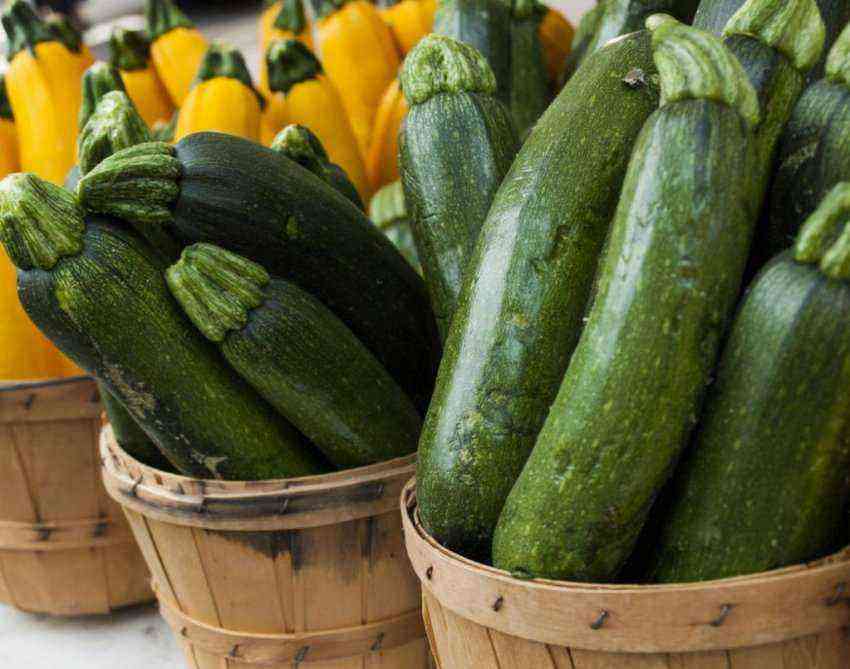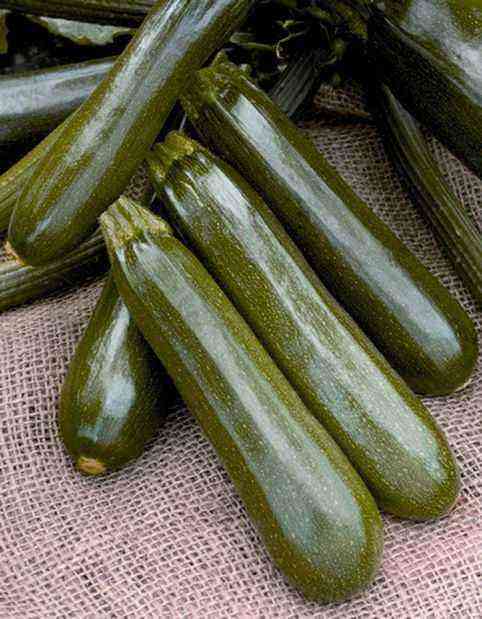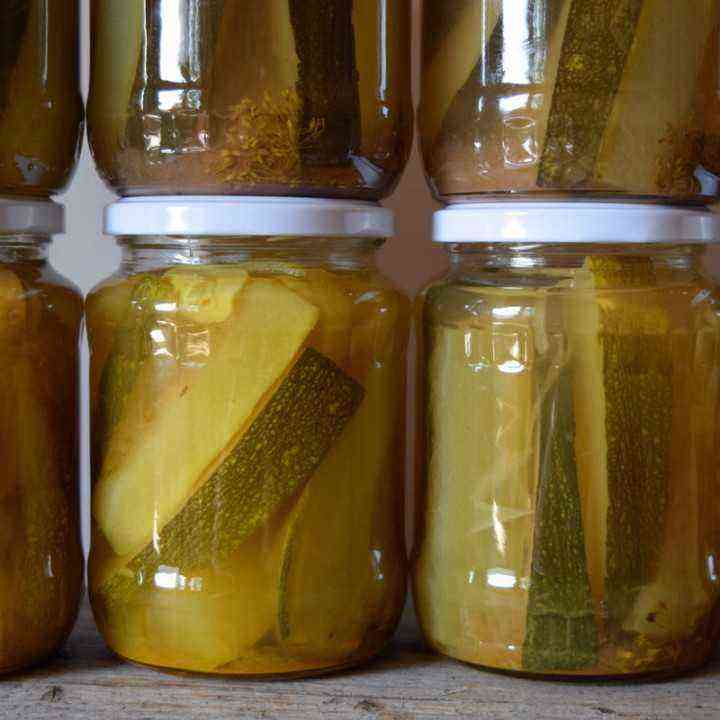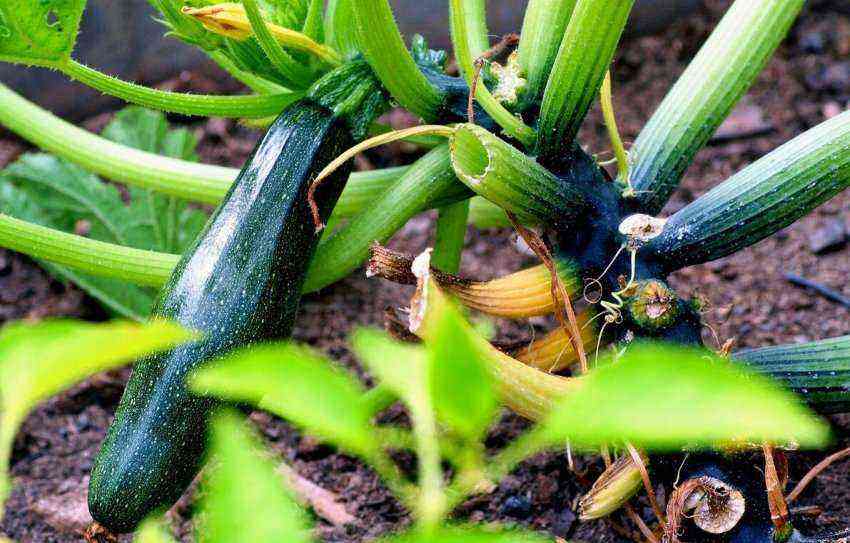Zucchini is a powerful and hardy vegetable crop that does not require much care from gardeners. If the bushes began to dry, it means that serious mistakes were made in agricultural technology. If you eliminate the cause of drying in time, you can save most of the crop.
Why do zucchini dry up?
If yellow dry spots appear on the leaves, or they turn completely yellow and dry out, there is a chance to save the plant and harvest without much loss. It all depends on the cause that caused the pathological situation and on how quickly adequate measures will be taken.
Low temperatures
Zucchini only in appearance seem hardy and unpretentious. In fact, they are very sensitive to environmental changes. Zucchini has large loose leaves that are sensitive to various kinds of influences, including temperature ones.
The negative reaction of the bushes – drying of the leaves, occurs when:
- frequent temperature changes – they exhaust and weaken plants;
- cooling.
How to fight:
- do not rush with sowing and planting seedlings in open ground – it is important to observe the terms and conditions of planting;
- cover the beds at night with agrofiber or film.
Planting density
Many inexperienced gardeners, in an effort to more efficiently use the area of uXNUMXbuXNUMXbthe plot, plant zucchini too densely. A similar situation is observed with an excess of seedlings – gardeners feel sorry for throwing it away, and they begin to plant plants too densely.
As a result of thickening, zucchini bushes begin to dry out. First of all, the lower leaves suffer – they get the least sunlight. Drying out is only the beginning of problems, thickening leads to diseases, a drop in yield, fruit rotting and other problems.
How to avoid crowding in squash beds:
- observe the planting pattern, between bushes 70 cm, between rows – from 80 to 150 cm, depending on the variety;
- if necessary, thin out plantings, without regret removing excess plants.
Nutrient Deficiency
Drying of leaves and bushes is often observed due to nutritional deficiencies. If the lack of minerals becomes critical, the plants lag behind in development and may not produce a crop.
How to deal with nutritional deficiencies:
- If the yellowness spreads evenly over the leaves, most likely the bushes are deficient in nitrogen. To compensate for the deficiency of this element, the application of mineral or organic fertilizers helps.
You can, for example, pour bushes with chicken manure, diluted in warm water 1:20. Under one plant pour 1 liter of top dressing. Instead of litter, mullein is suitable, it is diluted in water 1:10. - Yellowing and drying of the lower leaves indicates a lack of all the main elements – potassium, magnesium, phosphorus and nitrogen. Plants are recommended to be fed with complex fertilizer – Agricola or Diammofoska.
- If the upper leaves of the bushes turn yellow and dry, most likely they need iron, boron, manganese. Preparations Antichlorosis and Ferovit help to fill iron deficiency. The remaining elements can be obtained from the above complex fertilizers.
To prevent the zucchini from drying out, it is recommended to feed them during flowering with an infusion of nettle and ash. To prepare fertilizer, dissolve 10 cups of wood ash in 2 liters of water and mix the resulting solution with nettle infusion.
Incorrect watering
Zucchini readily absorb moisture, but do not tolerate stagnant water. Waterlogging, as well as a lack of moisture, leads to drying of the leaves – this is a reaction to a violation of the irrigation regime.
How to water zucchini correctly:
- Water for irrigation is used only warm (+15 … + 20˚C), settled. It is collected in large containers in which the water is heated in the sun.
- Watering should be regular. But taking into account the current weather, the amount of precipitation and soil moisture. If zucchini grows in open ground, watering is carried out as soon as a hard crust forms on the surface of the earth.
- Watering is carried out under the root – water should not fall on the above-ground parts of plants. It is not recommended to water the beds from a watering can – the spray will most likely fall on the leaves of the plants. The best option is drip irrigation, which allows you to evenly distribute moisture and prevents water from entering the green parts of plants.
- It is better to water zucchini in the evening or in the morning – when there is no sun. This will protect the leaves from burns – if suddenly, the water still gets on the leaves of the plants.
- The average rate of water per 1 sq. m – 10 l. It rises slightly at the stage of fruit set and decreases when they ripen.
- When growing zucchini in greenhouses, watering is carried out much less frequently than in open ground. This avoids high humidity, which zucchini does not tolerate well.
- It is recommended to alternate watering with loosening. By loosening the crust formed after watering, 3-4 cm deep, you can halve the evaporation of water.
Unsuitable soil
Zucchini needs moderately fertile and loose soil with neutral acidity. An increased level of acidity is one of the reasons for the appearance of yellow and dry leaves. Bushes on acidified soils wither, grow slowly, begin to rot.
To reduce acidity, before planting in the soil, they are applied per 1 sq. m:
- wood ash – 300 g;
- humus – 3-4 kg;
- fluffy lime – 200 g.
Soils are considered acidic if the pH is close to 5,5. Zucchini reacts extremely negatively to high acidity. Negative manifestations occur shortly after planting seedlings. Plants are not able to assimilate nutrition on acidic soils, because of this, the leaves and stems wither and dry out.
Downy Mildew
Yellowness and drying of the leaves is often associated with fungal diseases. One of them is peronosporosis or downy mildew. It spreads rapidly through the beds, infecting all plants. You can recognize the disease by small yellow, oily spots.
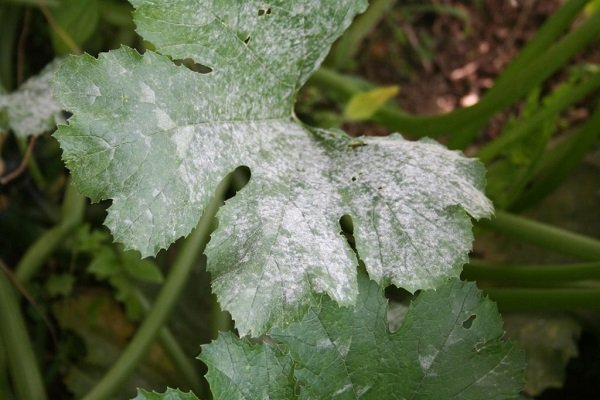
What to do if symptoms of peronosporosis are detected:
- remove all diseased leaves along with shoots;
- severely affected bushes to pull out and destroy;
- spray healthy and slightly affected plants with Bordeaux liquid or appropriate fungicides – Abiga-Peak, Trichoderma Veride, Consento.
The main cause of downy mildew is stagnation of water in the soil. As a rule, the disease appears after prolonged rains. Fertilizing with nitrogen and potassium helps to prevent the disease. To increase the immunity of zucchini, phosphorus, copper, and iron are also added.
Leaves and bushes affected by peronosporosis cannot be used for compost – they must be removed from the garden and burned to destroy the pathogen.
spider mite
This small insect reaches no more than 0,5 mm in length. The mites suck the juices from the leaves, causing them to turn yellow and eventually die. Insects settle on the reverse side of the leaves, which eventually become covered with cobwebs. If you do not destroy the mites, the plant dries up and dies.

How to deal with spider mites:
- Onion solution. Bulbs are passed through a meat grinder. One glass of the resulting onion gruel is diluted in 10 liters of water. Add 1 tbsp. l. ground pepper, 3 tbsp. l. wood ash and 1 tbsp. l soap solution. The resulting mixture is sprayed with bushes – 2 times at intervals of 1 week.
- Chemicals. To combat ticks, special means are used – insectoacaricides. Actellik, Fitoferm and their analogues are suitable.
- natural enemies. Predatory mites – amblyseius and phytoseiulus are spread across the beds. They are sold in gardening stores.
If the lesions are small, wipe the zucchini leaves with soapy water. It is prepared from a bar of grated laundry soap diluted in 10 liters of water.
Antraknoz
This disease has a fungal nature and very often affects gourds, including zucchini. The disease can overtake the crop at any time during the growing season. It is accompanied by the appearance of spots on the leaves, which grow over time. Severely affected bushes look like burnt ones.
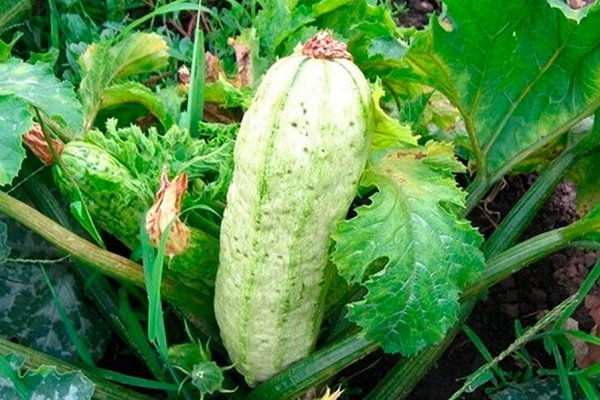
Anthracnose often affects squash grown in greenhouses. If the disease gets to the fruits, they quickly rot.
How to deal with anthracnose:
- careful sorting of seedlings – Suspicious seedlings should be rejected;
- spraying with colloidal sulfur – 100 g is diluted in 10 liters of water;
- Bordeaux mixture treatment – 100 g of lime and 100 g of copper sulfate are diluted in 10 liters of water.
In greenhouses, it is recommended to carry out regular sanitation. For this purpose, bleach is used – dilute 200 g of the product in 10 liters of water.
Fusarium wilt
This dangerous disease is caused by soil fungi, so damage from the roots begins. In plants, the vessels through which water and food move are affected. Because of this, the leaves turn yellow, wither and curl. In a few days, the entire plant dries up and dies.
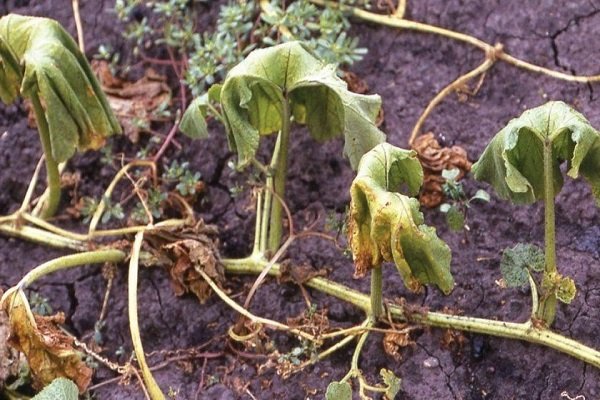
With Fusarium, the upper leaves are first affected, by this sign the disease can be distinguished from other pathologies. The stems near the roots become brown, covered with a pinkish-orange bloom and rot.
How to fight:
- the diseased bush is immediately pulled out and destroyed to prevent the spread of the disease;
- seed material is treated;
- dust bushes and soil with wood ash;
- after harvesting, the soil is healed – organic and mineral fertilizers are applied, all weeds are destroyed, and calcium-containing preparations are applied.
cucumber mosaic
The mosaic is caused by a virus, and it affects all gourds. The disease is accompanied by the appearance of yellow and white spots that resemble a mosaic pattern. The virus slows down the growth of plants, causes twisting and drying of the leaves. Fruits on such bushes do not ripen.
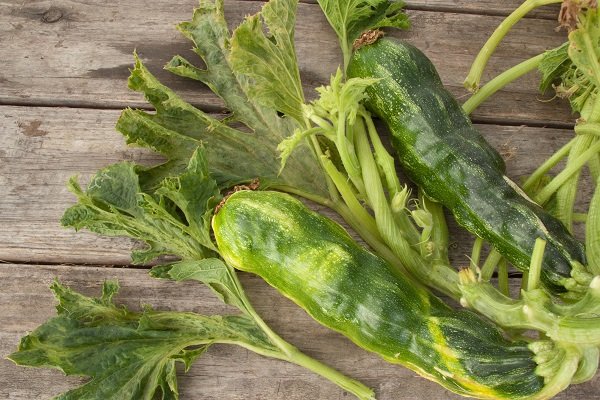
The disease has no cure. There are no drugs or folk remedies that could cure the affected plants. The only thing that gardeners can do is to prevent the development of the virus in every possible way.
How to fight:
- destroy affected plants;
- seed dressing in a dark pink solution of potassium permanganate;
- disinfection of garden tools;
- remove plant residues;
- fight weeds;
- destroy carriers of the virus – ants, aphids, Colorado potato beetle;
- preventive treatments with insecticides – preparations against insects.
aphid
These small insects suck the juices from the aerial parts of plants, causing them to weaken and die. They settle in colonies on the reverse side of the leaves, which become sticky, curl, dry out and die. Aphids not only weaken plants, but also infect them with dangerous, sometimes incurable diseases.

How to fight:
- spraying with Fitoverm, Karbofos, Aktara and their analogues – with severe lesions;
- processing with a soap-ash solution – it is prepared from 100 g of grated laundry soap and two glasses of ash;
- spraying with tobacco infusion – 10 g of soap and 50 g of tobacco are diluted in 1 liter of hot water, and infused for 3-4 hours;
- planting along the beds of odorous plants – mint, fennel, calendula, coriander, mustard, marigolds;
- cleaning plant residues from the garden;
- observance of crop rotation;
- washing off insects with a stream of water;
- placement of glue traps.
How to prevent vegetables from drying out?
To prevent the drying of zucchini, gardeners use simple preventive measures.
How to prevent the drying of zucchini – leaves and bushes:
- Choose resistant varieties. It is recommended to grow hardy zucchini with strong immunity, unpretentious and strong. In regions with a harsh climate, only zoned varieties should be planted. The most hardy and unpretentious zucchini:
- Malysh is an early variety with high productivity, grows well on well-lit participants;
- Tsukesha – an early variety, unpretentious and cold-resistant, high-yielding;
- Starling – resistant to cold and drought, well transported;
- Beluga whale – resistant to bad weather, not afraid of powdery mildew and bacteriosis;
- Chaklun – has stable immunity, demanding on agricultural technology.
- Water regularly. Water the zucchini taking into account the weather and soil moisture – it should be moistened about 40 cm deep. This is especially important during flowering, fruit formation and fruiting. If the vegetable grows on sandy and sandy soils, watering is required more often.
- Do not plant in full sun. Zucchini does not grow in the shade at all, but the scorching sun will not do them any good either. It is best to plant them so that during the highest position of the sun they are slightly shaded.
You can, for example, plant them along a hedge or fence, against the wall of a barn. At the same time, they will be protected from drafts, which they cannot endure catastrophically. - Follow the feeding rules. In drought and during cold snaps, it is recommended to apply mineral fertilizers, preferably complex preparations – there are special formulations for seedlings and for adult bushes.
- Protect from cold. Zucchini planted outdoors should be covered with foil until the weather stabilizes.
- Protect from pests and diseases. In order not to fight extensive lesions and not lose yields, it is much more effective to prevent diseases and insect attacks. Recommended:
- annually dig up the soil on a shovel bayonet;
- destroy all diseased bushes – burn;
- spray the plants with Bordeaux liquid, and treat the soil with bleach;
- observe crop rotation, do not plant zucchini in areas where melons and pumpkin crops grew.
In zucchini, despite their unpretentiousness, leaves often dry up. If you do not respond to the problem in time, do not determine its cause and do not take measures to save the bushes, you can lose the entire crop. Simple preventive actions will help reduce the risk of drying foliage.
